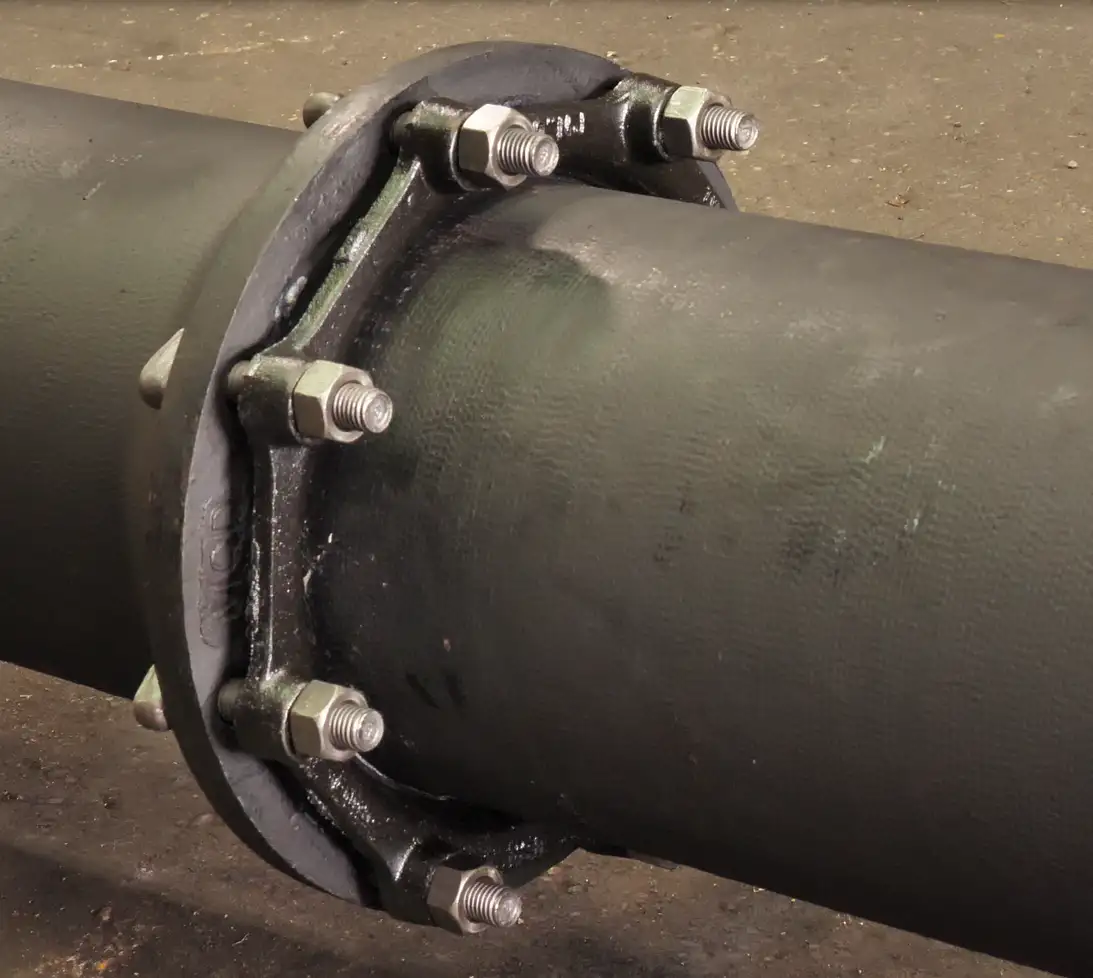In the field of piping systems, selecting the appropriate joint type is crucial for ensuring the integrity and longevity of the infrastructure. Two commonly used joint types are mechanical joints and push-on joints. Understanding the distinctions between these two can aid in making informed decisions for various applications.

1. Overview of Mechanical Joints
Mechanical joints are a type of pipe connection that utilizes bolts, gaskets, and glands to create a watertight seal. They are designed to allow for some flexibility and movement between connected pipes, making them suitable for applications where slight misalignments or ground movements are expected.
Key Components:
-
Gland: A ring that compresses the gasket to form a seal.
-
Gasket: A rubber or elastomeric material that ensures a leak-proof connection.
-
Bolts: Fasteners that secure the gland and compress the gasket.
Advantages:
-
Flexibility: Accommodates minor misalignments and ground movements.
-
Ease of Installation: Faster and requires less labor compared to flanged joints.
-
Cost-Effective: Generally less expensive due to simpler components and installation.
Disadvantages:
-
Pressure Limitations: Not suitable for high-pressure applications without additional reinforcement.
-
Maintenance: May require more frequent maintenance checks to ensure integrity.
2. Overview of Push-On Joints
Push-on joints involve connecting pipes by inserting one pipe’s spigot end into another’s bell end, with a gasket providing a watertight seal. This design allows for quick and easy installation, making it ideal for applications requiring minimal downtime.
Key Components:
-
Bell End: The expanded end of a pipe designed to receive the spigot end of another pipe.
-
Spigot End: The plain end of a pipe that fits into the bell end of another pipe.
-
Gasket: A rubber or elastomeric material placed between the bell and spigot to form a seal.
Advantages:
-
Quick Installation: No bolts or additional hardware required, reducing installation time.
-
Cost-Effective: Lower material and labor costs compared to other joint types.
-
Minimal Maintenance: Fewer components mean less potential for failure.
Disadvantages:
-
Limited Flexibility: Less accommodating to misalignments or ground movements.
-
Pressure Limitations: Not suitable for high-pressure applications without additional reinforcement.
3. Comparison Table
| Feature | Mechanical Joints | Push-On Joints |
|---|---|---|
| Flexibility | High | Low |
| Pressure Tolerance | Moderate | Moderate |
| Installation Time | Longer | Shorter |
| Cost | Higher | Lower |
| Maintenance | Requires regular checks | Minimal |
| Applications | Underground pipelines, water distribution | Underground pipelines, water distribution |
4. Applications of Mechanical Joints
Mechanical joints are commonly used in situations where flexibility and ease of installation are crucial. They are ideal for underground pipelines, water distribution systems, and areas prone to ground movement.
Typical Applications:
-
Water Distribution Systems: Ensures leak-proof connections in municipal water supply lines.
-
Sewer Systems: Accommodates ground shifts and settlements.
-
Industrial Applications: Suitable for systems requiring frequent disassembly and reconfiguration.
5. Applications of Push-On Joints
Push-on joints are preferred in applications where quick installation and minimal maintenance are desired. They are commonly used in underground pipelines, water distribution systems, and areas with stable ground conditions.
Typical Applications:
-
Water Distribution Systems: Provides quick and reliable connections in municipal water supply lines.
-
Sewer Systems: Suitable for areas with stable ground conditions.
-
Irrigation Systems: Allows for easy installation and maintenance.
6. Installation and Maintenance Considerations
Mechanical Joints:
-
Installation: Requires more time and labor; suitable for field installations.
-
Maintenance: Periodic checks are necessary to ensure gasket integrity and prevent leaks.
Push-On Joints:
-
Installation: Involves inserting one pipe end into another; quicker and requires less labor.
-
Maintenance: Minimal maintenance due to fewer components.
7. Cost Analysis
While mechanical joints are generally more cost-effective due to simpler components and installation, push-on joints may be more economical in the long term for applications requiring quick installation and minimal maintenance.
8. Conclusion
The choice between mechanical joints and push-on joints depends on specific project requirements, including pressure conditions, flexibility needs, installation time, and budget constraints. Mechanical joints offer flexibility and ease of installation, making them suitable for underground and low-pressure applications. Push-on joints provide quick and reliable connections, ideal for applications requiring minimal downtime. Careful consideration of these factors will ensure the selection of the appropriate joint type for your piping system.
Frequently Asked Questions (FAQs)
1. What are the primary differences between mechanical joints and push-on joints?
Mechanical joints utilize bolts, gaskets, and glands to create a flexible and watertight seal, suitable for applications requiring movement accommodation. Push-on joints involve inserting one pipe’s spigot end into another’s bell end, with a gasket providing a watertight seal, offering quick and easy installation.
2. In what scenarios are mechanical joints preferred over push-on joints?
Mechanical joints are preferred in underground pipelines, water distribution systems, and areas prone to ground movement due to their flexibility and ease of installation.
3. What are the advantages of using push-on joints?
Push-on joints offer quick installation, lower material and labor costs, and minimal maintenance, making them suitable for applications requiring minimal downtime.
4. How does the installation process differ between mechanical and push-on joints?
Mechanical joints require more time and labor for installation, involving bolts and gaskets. Push-on joints involve inserting one pipe end into another, requiring less time and labor.
5. What are the cost implications of choosing between mechanical and push-on joints?
Mechanical joints may have higher initial costs due to additional components and installation time. Push-on joints may be more economical in the long term for applications requiring quick installation and minimal maintenance.
